Quilting is a delightful craft that allows you to express your creativity while producing beautiful and functional pieces. However, amidst the joy of creating quilts, how to organize quilt fabric?
In this comprehensive guide, we’ll explore various methods and strategies to help you efficiently organize your quilt fabric, ensuring a smooth and enjoyable quilting experience.
What Is Fabric Organization?
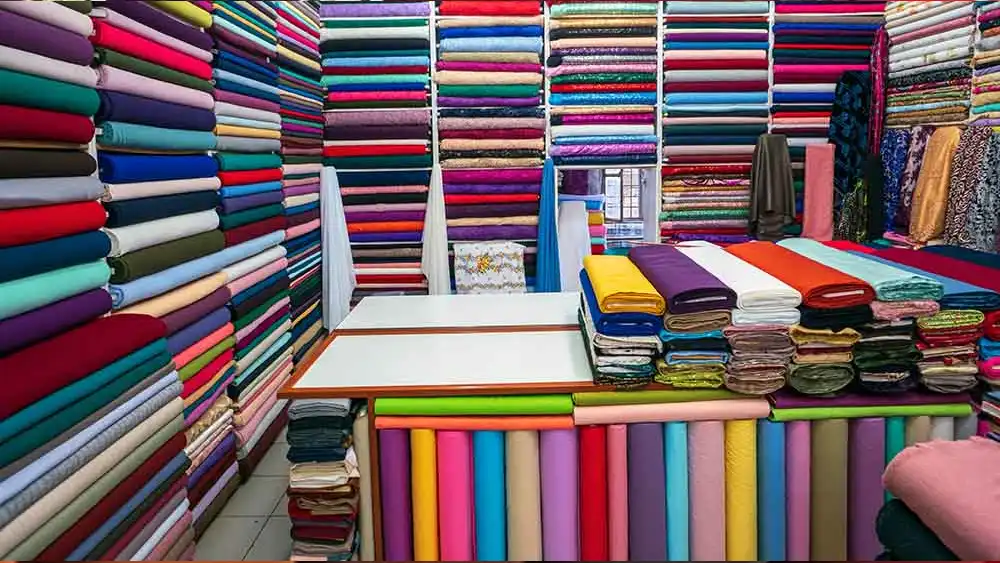
Fabric organization, also known as fabric storage refers to the systematic arrangement and management of fabric materials used in quilting, sewing, or other textile-related crafts. It involves sorting, categorizing, storing, and maintaining fabric in a manner that is both efficient and accessible.
Fabric organization aims to streamline the process of selecting materials for projects, minimize clutter, and optimize workspace functionality. By organizing fabric effectively, crafters can enhance productivity, creativity, and enjoyment in their textile endeavors.
Importance of Fabric Organization
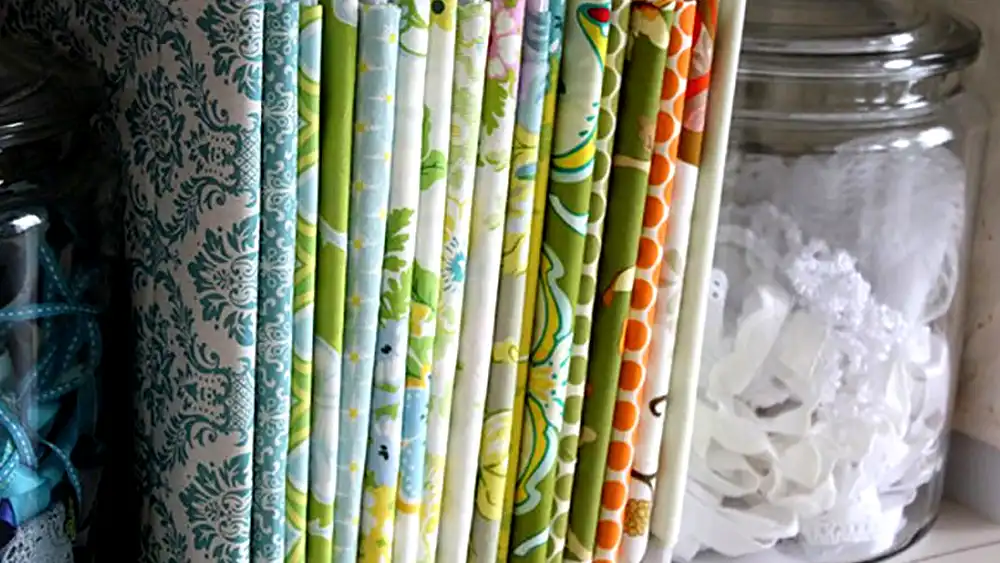
The importance of fabric organization cannot be overstated, particularly in the realm of quilting and sewing. Here’s why fabric organization matters:
- Efficiency: An organized fabric stash allows crafters to locate specific materials quickly, saving valuable time during project planning and execution. With fabrics sorted by type, color, or pattern, there’s no need to rummage through messy piles or bins, leading to more efficient workflow.
- Minimizes Waste: When fabrics are organized and easily accessible, crafters can accurately assess their inventory before starting a project. This helps prevent overbuying or duplicating materials, reducing unnecessary expenses and minimizing fabric waste.
- Inspires Creativity: A well-organized fabric collection can spark inspiration and creativity. By visually displaying fabrics in an organized manner, crafters can easily visualize potential combinations and designs, leading to more innovative and satisfying projects.
- Optimizes Space: Effective fabric organization maximizes the use of available space in crafting areas. Whether through storage containers, shelving units, or hanging solutions, organized fabrics free up the workspace and make it easier to navigate and work in.
- Preserve Fabric Quality: Proper organization helps protect fabrics from damage or deterioration. Fabrics stored in clean, dry, and well-ventilated spaces are less prone to wrinkles, fading, or creasing, ensuring that materials remain in optimal condition for future use.
- Streamlines Workflow: Organized fabric storage promotes a streamlined workflow, allowing crafters to focus on their creative process without the distraction of clutter or disarray. With materials readily at hand, project planning, cutting, and assembly become more seamless and enjoyable.
In essence, fabric organization is the foundation of a successful and enjoyable quilting or sewing experience. By investing time and effort into organizing fabrics effectively, crafters can enhance their productivity, creativity, and overall satisfaction with their textile projects.
Getting Started: Sorting and Categorizing Your Fabric
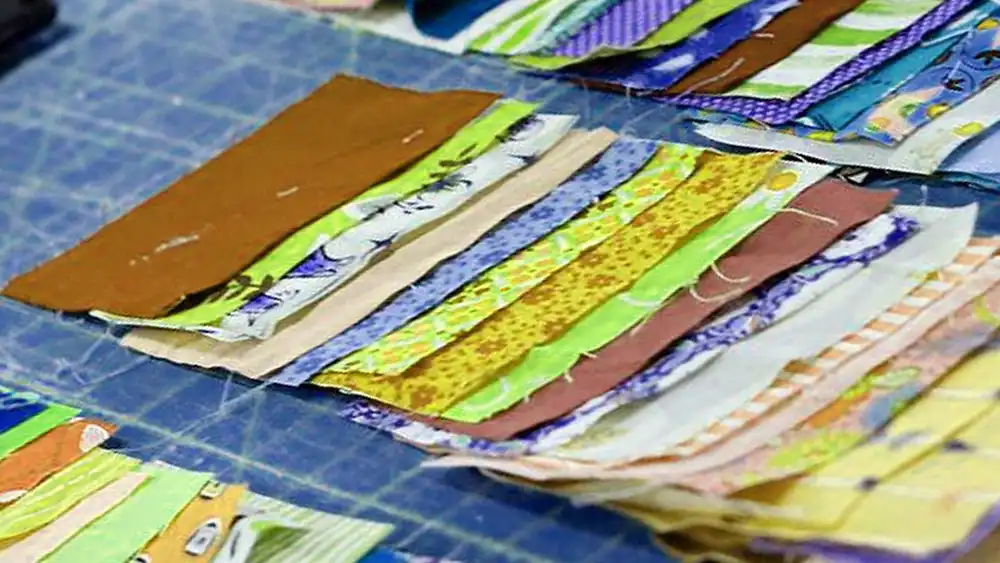
Assessing Your Fabric Collection
Before diving into the organization process, take some time to assess your fabric collection. Sort through your stash and categorize the fabrics based on color, pattern, type, and size. This initial step will provide clarity and make the organization process more manageable.
Creating Fabric Categories
Divide your fabric stash into distinct categories to facilitate organization. Common categories include solids, prints, batiks, novelty fabrics, and specialty fabrics like flannel or denim. Consider your quilting preferences and sorting criteria to create categories that align with your needs.
Utilizing Storage Containers and Shelving
Invest in high-quality storage containers and shelving units to store your fabric neatly. Clear plastic bins or fabric baskets are ideal for organizing fabric by category, allowing you to easily see and access your materials. Additionally, open shelving provides a convenient display for showcasing your fabric collection while keeping it organized.
Innovative Storage Solutions for Quilt Fabric
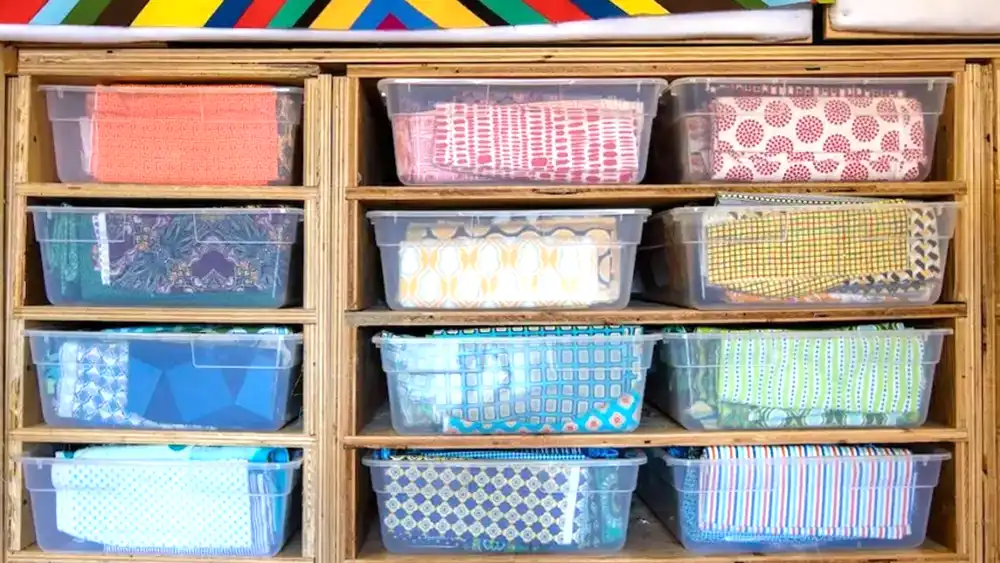
Rolling vs. Folding Fabric
When it comes to storing fabric, the debate between rolling and folding is ongoing. While folding is traditional and space-efficient, rolling offers several advantages, including reduced creasing and easier visibility of fabric patterns. Experiment with both methods to determine which works best for your space and preferences.
Utilizing Hanging Storage
Maximize vertical space in your quilting area by incorporating hanging storage solutions. Install a pegboard or curtain rod and hang fabric strips or precuts for easy access. This not only saves space but also adds a decorative element to your quilting space.
Repurposing Furniture for Fabric Storage
Get creative with furniture pieces to enhance fabric storage. Repurpose bookshelves, dressers, or cabinets to store fabric neatly. Use clear bins or fabric bins to keep fabric organized within the furniture units, ensuring easy access and visibility.
Storing Quilting Fabric Tips
Proper storage is crucial to maintain the quality and longevity of your quilting fabric. Here are some tips to consider:
1. Fold or Roll:
- Folding: Fold fabrics carefully to avoid creases. For larger pieces, consider using tissue paper or acid-free folding boards to prevent wrinkles.
- Rolling: Roll fabrics tightly and store them in a cool, dark place. This method is particularly effective for preventing creases in delicate fabrics.
2. Protect from Light and Heat:
- Direct Sunlight: Avoid exposing fabrics to direct sunlight, as this can cause fading and discoloration.
- Heat: Store fabrics in a cool environment to prevent colors from fading or bleeding.
3. Keep Away from Moisture:
- Humidity: High humidity can lead to mildew and mold. Store fabrics in a dry place, using moisture-absorbing packets if necessary.
- Leaks: Ensure that your storage area is free from leaks or water damage.
4. Use Appropriate Containers:
- Fabric Bins: Store fabrics in sturdy, breathable bins or baskets.
- Vacuum-Sealed Bags: For long-term storage, vacuum-sealed bags can help protect fabrics from dust, pests, and moisture. However, be cautious about using these for very delicate fabrics, as the pressure can sometimes cause damage.
5. Label Clearly:
- Labels: Label each fabric with its type, color, and any relevant information (e.g., width, yardage, fabric content). This will make it easier to find the perfect fabric for your projects.
6. Consider Pest Control:
- Moths: Moths can damage fabric. Use mothballs or lavender sachets to deter them.
7. Rotate Your Stock:
- Rotation: Periodically rotate your fabric stash to ensure that all fabrics receive equal attention and prevent any from being forgotten.
By following these tips, you can help preserve the quality of your quilting fabrics and ensure that they are ready for your next project.
Maintaining Your Organized Fabric Stash
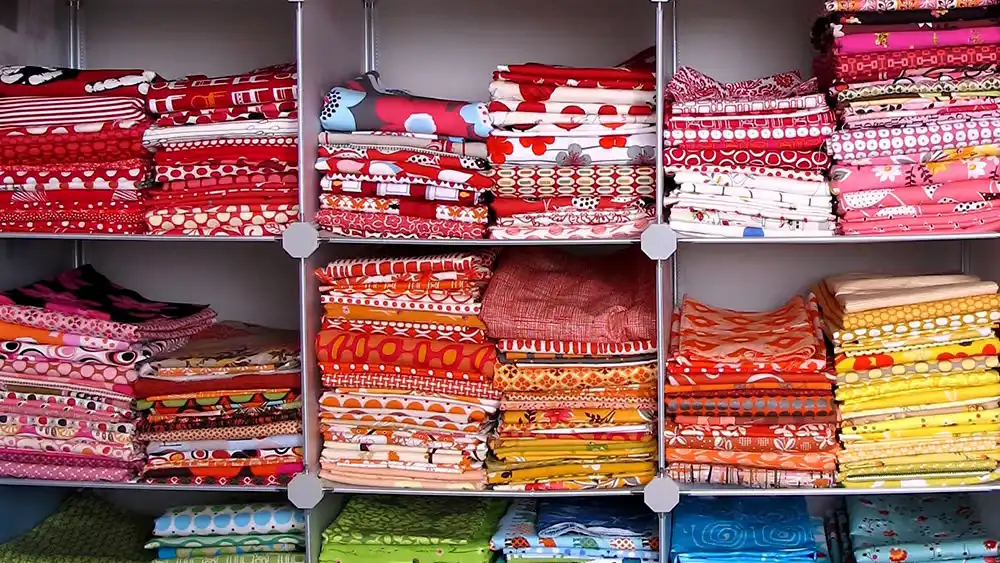
Regular Inventory Checks
Make it a habit to conduct regular inventory checks of your fabric stash. Periodically assess your collection, declutter any unused or unwanted fabrics, and replenish essential supplies as needed. This practice ensures that your fabric stash remains organized and functional over time.
Labeling and Documentation
Enhance organization by labeling storage containers and shelves with descriptive tags or labels. Include relevant information such as fabric type, color, and quantity to streamline the retrieval process. Additionally, consider maintaining a digital or physical inventory log to track your fabric collection and avoid duplicate purchases.
Adapting and Evolving
As your quilting journey progresses, your fabric organization needs may evolve. Stay flexible and open to adapting your organization system to suit your changing preferences and needs. Embrace new storage solutions and organization techniques to optimize your quilting space continually.
How to Organize Quilt Fabric?

Step 1: Declutter and Sort
Begin by decluttering your fabric stash and sorting it into designated categories based on color, pattern, and fabric type.
Step 2: Invest in Storage Solutions
Invest in quality storage containers, shelving units, and furniture pieces to store your fabric collection neatly and efficiently.
Step 3: Implement Organizational Systems
Utilize innovative organizational systems such as rolling fabric, hanging storage, and repurposed furniture to maximize space utilization.
Step 4: Maintain Regular Maintenance
Establish a routine for regular inventory checks, decluttering, and labeling to maintain the organization of your fabric stash.
Step 5: Stay Flexible and Adaptive
Be open to adapting your organization system to accommodate changes in your quilting preferences and collection size.
How to Organize Quilt Fabric Scraps?

Organizing quilt fabric scraps is a common challenge for quilters, but with the right approach, it can be a manageable task.
Here’s how to effectively organize quilt fabric scraps:
Sort by Size: Begin by sorting your fabric scraps by size. Separate them into categories such as small scraps, medium-sized pieces, and larger remnants. This initial sorting step will make it easier to find the right scraps for your projects.
Categorize by Color: Once sorted by size, further categorize your fabric scraps by color. Separate them into piles or containers according to color families, such as reds, blues, greens, etc. This organization method allows you to quickly locate specific colors when needed.
Utilize Storage Containers: Invest in clear plastic bins or fabric baskets to store your sorted fabric scraps. Label each container with the corresponding color or size category to facilitate easy identification. Stack the containers neatly in your sewing or crafting space for quick access.
Consider Fabric Type: If you work with a variety of fabric types, such as cotton, flannel, or denim, consider organizing your scraps by fabric type as well. This additional categorization can help you select the appropriate fabric for specific projects with ease.
Store Vertically or Horizontally: Depending on your storage space, choose between storing your fabric scraps vertically or horizontally. Vertical storage, such as using clear plastic bins or hanging fabric strips on hooks, saves space and allows you to see your entire fabric collection at a glance. Horizontal storage, like stacking bins or using shallow drawers, works well for maximizing shelf space.
Regularly Declutter: Periodically assess your fabric scrap collection and declutter any pieces that are too small to be useful or no longer align with your quilting projects. Donate excess scraps to quilting guilds, schools, or charitable organizations to minimize waste and keep your collection manageable.
By following these steps and implementing a consistent organization system, you can effectively manage and utilize your quilt fabric scraps for future projects. Organized scraps not only save time and space but also inspire creativity and experimentation in your quilting endeavors.
Quilt Fabric Storage System

A quilt fabric storage system encompasses various methods and strategies for organizing and storing fabric materials used in quilting projects.
Here’s a detailed explanation of key components and considerations for an effective quilt fabric storage system: You can get some stunning quilt fabric storage ideas.
Storage Containers:
- Clear Plastic Bins: Transparent bins allow for easy visibility of fabric contents, making it simple to locate specific materials.
- Fabric Baskets: Fabric baskets provide a decorative and functional storage solution, allowing you to organize fabric scraps or precuts by size, color, or type.
Shelving Units:
- Open Shelving: Open shelves provide a convenient display for showcasing fabric collections while keeping them organized and accessible.
- Adjustable Shelves: Adjustable shelves allow for customization based on the size and quantity of fabric being stored, maximizing space utilization.
Hanging Storage Solutions:
- Pegboards: Pegboards offer versatile hanging storage options for fabric strips, precuts, or tools, optimizing vertical space in your quilting area.
- Curtain Rods: Curtain rods can be repurposed as hanging racks for fabric rolls or folded yardage, keeping them wrinkle-free and easily accessible.
Furniture Repurposing:
- Bookshelves: Repurpose bookshelves to store fabric bolts, folded yardage, or storage bins, creating a visually appealing and organized display.
- Dressers or Cabinets: Utilize dressers or cabinets with drawers to store fabric scraps, notions, or quilting supplies, keeping them neatly organized and out of sight when not in use.
Organization Systems:
- Sorting by Color, Pattern, or Type: Organize fabric by color families, patterns (e.g., solids, prints, batiks), or fabric types (e.g., cotton, flannel, denim) to facilitate easy retrieval and coordination for quilting projects.
- Labeling and Documentation: Label storage containers, shelves, or drawers with descriptive tags indicating fabric contents or categories, enhancing organization and efficiency.
- Inventory Management: Maintain a digital or physical inventory log to track fabric quantities, monitor usage, and prevent duplicate purchases, ensuring optimal management of your fabric stash.
Maintenance and Adaptation:
- Regular Inventory Checks: Conduct periodic inventory checks to declutter unused or unwanted fabrics, replenish essential supplies, and ensure the organization system remains functional and efficient.
- Adaptability: Stay flexible and open to adapting your storage system as your quilting needs evolve. Embrace new storage solutions, organizational techniques, or space-saving hacks to optimize your quilting space continually.
By implementing a comprehensive quilt fabric storage system tailored to your preferences and space constraints, you can streamline your quilting process, enhance creativity, and maintain a clutter-free and inspiring workspace for your textile endeavors.
FAQs
How can I prevent fabric from fading or discoloration over time?
To preserve the vibrancy of your fabric, store it in a cool, dark environment away from direct sunlight. Additionally, consider using acid-free tissue paper or fabric protectors to minimize fading.
What is the best way to store precut fabric bundles?
Precut fabric bundles can be stored flat in clear plastic bins or hung on hooks using binder clips. Avoid stacking heavy items on top to prevent creasing or distortion of the precuts.
Should I wash the fabric before organizing it?
It’s a personal preference whether to wash the fabric before organizing it. Some quilters prefer to prewash to remove sizing and ensure colorfastness, while others prefer to work with unwashed fabric to maintain its original texture and sizing.
How do I prevent the fabric from getting wrinkled or creased during storage?
To prevent fabric from wrinkling or creasing, avoid overpacking storage containers and shelves. Opt for storage solutions that allow the fabric to lay flat or hang vertically to minimize folding.
Can I use vacuum-sealed bags to store fabric?
While vacuum-sealed bags can be effective for compressing fabric to save space, they may not be suitable for long-term storage, especially for delicate or vintage fabrics. Consider the fabric’s fiber content and condition before using vacuum-sealed bags.
What should I do with fabric scraps and remnants?
Fabric scraps and remnants can be repurposed for various quilting projects or donated to quilting guilds, schools, or charitable organizations. Consider organizing scraps by color or size for easy access when crafting scrappy quilts or smaller projects.
Conclusion
Organizing quilt fabric is a rewarding endeavor that enhances your quilting experience and creativity. By implementing the strategies and tips outlined in this guide, you can transform your quilting space into a well-organized oasis of inspiration. Remember to stay adaptable, embrace creativity, and enjoy the process of curating your fabric stash for future quilting adventures!
